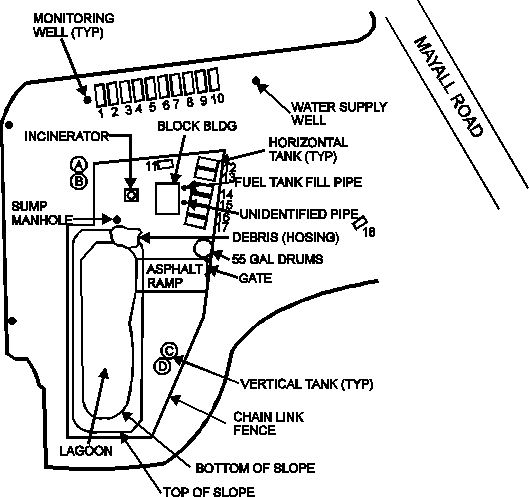Processing Your Payment
Please do not leave this page until complete. This can take a few moments.
- News
-
Editions
-
- Lists
-
Viewpoints
-
Our Events
-
Event Info
- Business Leaders of the Year Reception 2025
- Women's Leadership Forum 2025
- On the Road with Mainebiz in Bethel
- Health Care Forum 2025
- On The Road with Mainebiz in Greenville
- On The Road with Mainebiz in Waterville
- Small Business Forum 2025
- Outstanding Women in Business Reception 2025
- On The Road with Mainebiz in Bath
- 60 Ideas in 60 Minutes Portland 2025
- 40 Under 40 Awards Reception 2025
- On The Road with Mainebiz in Lewiston / Auburn
- 60 Ideas in 60 Minutes Bangor 2025
Award Honorees
- 2025 Business Leaders of the Year
- 2024 Women to Watch Honorees
- 2024 Business Leaders of the Year
- 2023 NextUp: 40 Under 40 Honorees
- 2023 Women to Watch Honorees
- 2023 Business Leaders of the Year
- 2022 NextUp: 40 Under 40 Honorees
- 2022 Women to Watch Honorees
- 2022 Business Leaders of the Year
-
-
Calendar
-
Biz Marketplace
- News
- Editions
- Lists
- Viewpoints
-
Our Events
Event Info
- View all Events
- Business Leaders of the Year Reception 2025
- Women's Leadership Forum 2025
- On the Road with Mainebiz in Bethel
- Health Care Forum 2025
- On The Road with Mainebiz in Greenville
- + More
- On The Road with Mainebiz in Waterville
- Small Business Forum 2025
- Outstanding Women in Business Reception 2025
- On The Road with Mainebiz in Bath
- 60 Ideas in 60 Minutes Portland 2025
- 40 Under 40 Awards Reception 2025
- On The Road with Mainebiz in Lewiston / Auburn
- 60 Ideas in 60 Minutes Bangor 2025
- - Less
Award Honorees
- 2025 Business Leaders of the Year
- 2024 Women to Watch Honorees
- 2024 Business Leaders of the Year
- 2023 NextUp: 40 Under 40 Honorees
- 2023 Women to Watch Honorees
- 2023 Business Leaders of the Year
- + More
- 2022 NextUp: 40 Under 40 Honorees
- 2022 Women to Watch Honorees
- 2022 Business Leaders of the Year
- Nomination Forms
- Calendar
- Biz Marketplace
EPA proposes to remove a Gray landfill from Superfund list
 Courtesy / U.S. Environmental Protection Agency
A 1995 site plan from the U.S. Environmental Protection Agency’s Office of Solid Waste and Emergency Response depicts the McKin Co. Superfund site. About 100,000 to 200,000 gallons of waste are thought to have been processed annually.
Courtesy / U.S. Environmental Protection Agency
A 1995 site plan from the U.S. Environmental Protection Agency’s Office of Solid Waste and Emergency Response depicts the McKin Co. Superfund site. About 100,000 to 200,000 gallons of waste are thought to have been processed annually.
The U.S. Environmental Protection Agency this week said it is planning to remove a Superfund site in Gray from the cleanup program's National Priorities List.
Known as the McKin Co. site, at 25 Mayall Road, the former landfill is one of 10 environmentally contaminated sites nationwide being proposed for removal from the list.
Deleting a site from the list indicates that cleanup of the contamination is complete and allows communities to move forward in reusing the land, according to an EPA news release.
EPA has determined that no further site remediation work is required at the McKin Co. site. Operation, maintenance and monitoring activities will continue at the site as needed.
EPA is accepting public comments on the proposed deletion for the next month.
1983 listing
Congress created the Superfund program in 1980. The EPA program aims to identify and clean up the country's most polluted sites.
The McKin Co. site is in a rural residential area and was listed in September 1983. The seven-acre landfill was used for nearly two decades as a dumping ground for liquid waste before the EPA stepped in.
The agency estimated the landfill absorbed between 100,000 and 200,000 gallons of solvents, oils and other chemicals each year. The result was contamination that included heavy metals like mercury, lead and arsenic.
Soil and groundwater cleanup ended in 1995. The site, however, remained on the list.
Liquid waste
A sand and gravel pit operated on the site prior to a facility that opened in 1965 for the storage and disposal of liquid wastes.
The facility expanded in 1972 to accommodate waste generated when a Norwegian tanker ran aground on a ledge in Hussey Sound, a shipping channel in Casco Bay, spilling 100,000 gallons of industrial fuel.
Between 1965 and 1978, the plant handled and disposed of a mixture of solvents, oils and other chemicals. About 100,000 to 200,000 gallons of waste are thought to have been processed annually.
The site included an incinerator, a concrete-block building, an asphalt-lined lagoon and storage and fuel tanks.
In 1973, residents reported odors in well water. In 1977, EPA confirmed that contaminated groundwater had reached many local private wells. The private water wells were disconnected, and bottled water was provided. The public water system was extended to the affected area in 1978, and all residents were connected to it.
Remedies and conditions
The site’s remedy for groundwater contamination included groundwater extraction and treatment, demolishing the buildings, clearing debris, draining and filling in the lagoon, removing 16 drums of contaminated materials, fencing the site and covering it with soil and vegetation.
Soil cleanup began in July 1986 and was completed in June 1987. Construction of a groundwater extraction and treatment system was completed in September 1990.
The EPA said there will be long-term stewardship of the site, to provide security and ensure future land use is consistent with the remediation.
Superfund law requires reviews every five years after cleanups to ensure that remedies continue to protect human health and the environment. A proposed or final deletion does not prevent future actions under the Superfund law.
EPA’s 30-day public comment period on the proposed deletion began March 22 and closes April 20. For more information, click here.










0 Comments